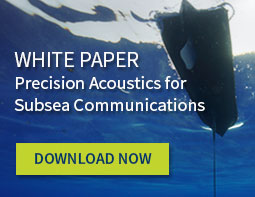How Experienced Piloting Helps Achieve Mission Success
Liquid Robotics — July 30, 2019
An experienced Wave Glider pilot can help make the difference in a mission, providing the flexibility to make adjustments as interesting data or challenging conditions arise along the way, and ensuring a successful outcome.
Ben Harmon, one of our most experienced Mission Support Specialists, shares what a day as a Wave Glider pilot is like and some of his most memorable missions.
Walk me through a day in the life of a Wave Glider pilot.
When I arrive in the morning, the first thing I do is assess the health and status of all the Wave Gliders we are currently piloting. There’s a checklist our team follows for every Wave Glider. I check any alarms that occurred overnight; I check to make sure the vehicle is on course; I make sure that the inclusion and exclusion zones are set up properly for where the vehicle needs to be in its mission; I verify that the sensor data looks correct; and I review the mission plan to see if we need to be moving the Wave Glider to a new location or starting anything new for the mission.
We’re staffed 24/7, and our team of pilots is very experienced and knowledgeable. In addition to piloting customer missions, we are also in charge of piloting and supporting Liquid Robotics’ research and development fleet in Hawai’i. That means we’re always on the cutting edge of Wave Glider software and hardware developments. Before anything gets to customers, we’ve had months of testing and troubleshooting in the water, and we’re able to translate that to really accessible support from our team to customers.
Can you share one of your more memorable missions as a pilot?
After the Kilauea volcano erupted in June 2018 and the plume began to enter the water surrounding the Big Island of Hawai’i, we sent two Wave Gliders around to help collect data for several research universities and government agencies. That was a very piloting-intensive mission.
We were one of the few crafts allowed inside the Coast Guard safety zone—as an unmanned surface vehicle, the Wave Glider offered the advantage of not putting any people in harm’s way—so we were in daily contact with the Coast Guard and the USGS, getting updates as the coastline literally changed due to the lava flowing into the ocean. We would use that to update our mission plan so that we’d be able to safely navigate while still collecting the necessary data. We also actively monitored the water temperature to make sure that the Wave Glider was still in its operating range—remember, this was very hot water in certain areas. We were also actively piloting the vehicles when stronger currents would pick up, and we frequently adjusted our courses to collect data that researchers needed from specific areas.
Your team has developed best practices for piloting Wave Gliders in rough conditions. Can you tell me more about that?
Every winter for the past several years we have sent Wave Gliders to the North Atlantic to try to find the biggest waves we can. The vehicles we send out for these engineering tests are loaded with sensors to collect data such as wave height and direction, plus GoPro cameras to collect video footage. We then work closely with the engineering team to analyze the footage and see vehicle performance from various wave directions and heights. Based on our learnings from those missions, we’ve developed best practices for piloting Wave Gliders in high sea states.
You’ve been piloting Wave Gliders for years, and recently got to swim with one during a customer training visit in Hawaii. Did anything surprise you?
Yes, just how much force there is. While you understand the theoretical side of it, to actually hold on to the Wave Glider, feel the wave pass under, and then look down and see the sub take off is very cool. It’s pretty incredible how much of that energy is transferred into forward motion.
Learn more about how piloting and other services can help ensure mission success.
